Josh's Frogs
Feeding Dart Frogs: What, How Often, and How Much?
With the rise in popularity of poison dart frogs, more and more information is available on their feeding and care—but not all of it is correct.
The following article was written to address some of the most commonly asked questions submitted to Josh's Frogs since we started in 2004. Mainly, what do dart frogs eat, how often do you feed them, and how much do you feed them.
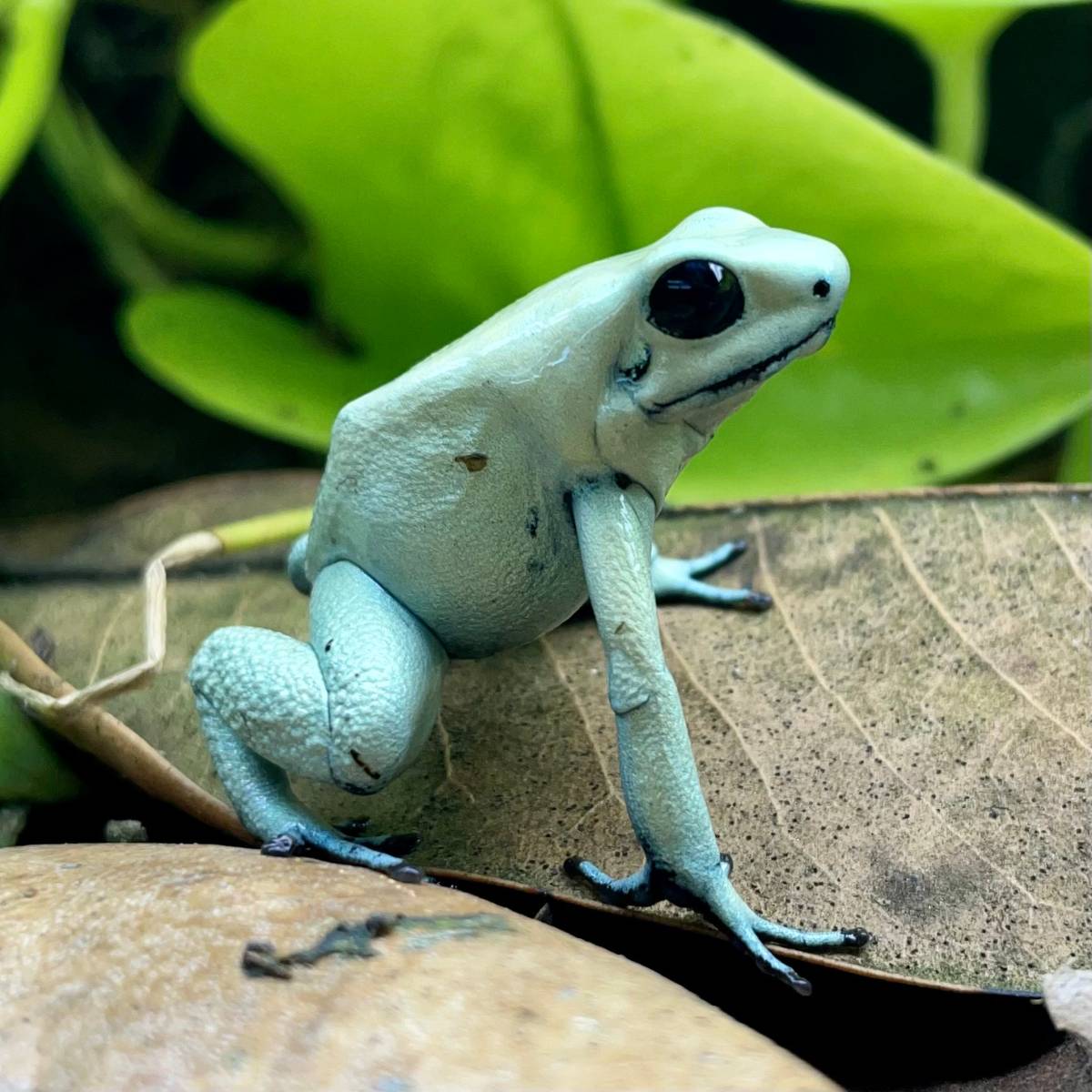
What Do Poison Dart Frogs Eat?
The vast majority of poison dart frogs (with a few exceptions, such as Phyllobates bicolor, Phyllobates terribilis, or Epipedobates trivittatus) are microphagus—this means they specialize in consuming very small foods. Most dart frogs will not consume any insect or arthropod much over 1/8 inch, and young froglets like food even smaller. Feeder animals should be dusted with a quality vitamin/mineral supplement at feeding.
Below is a list of common feeder animals safe to feed to poison dart frogs, organized from smallest to largest.
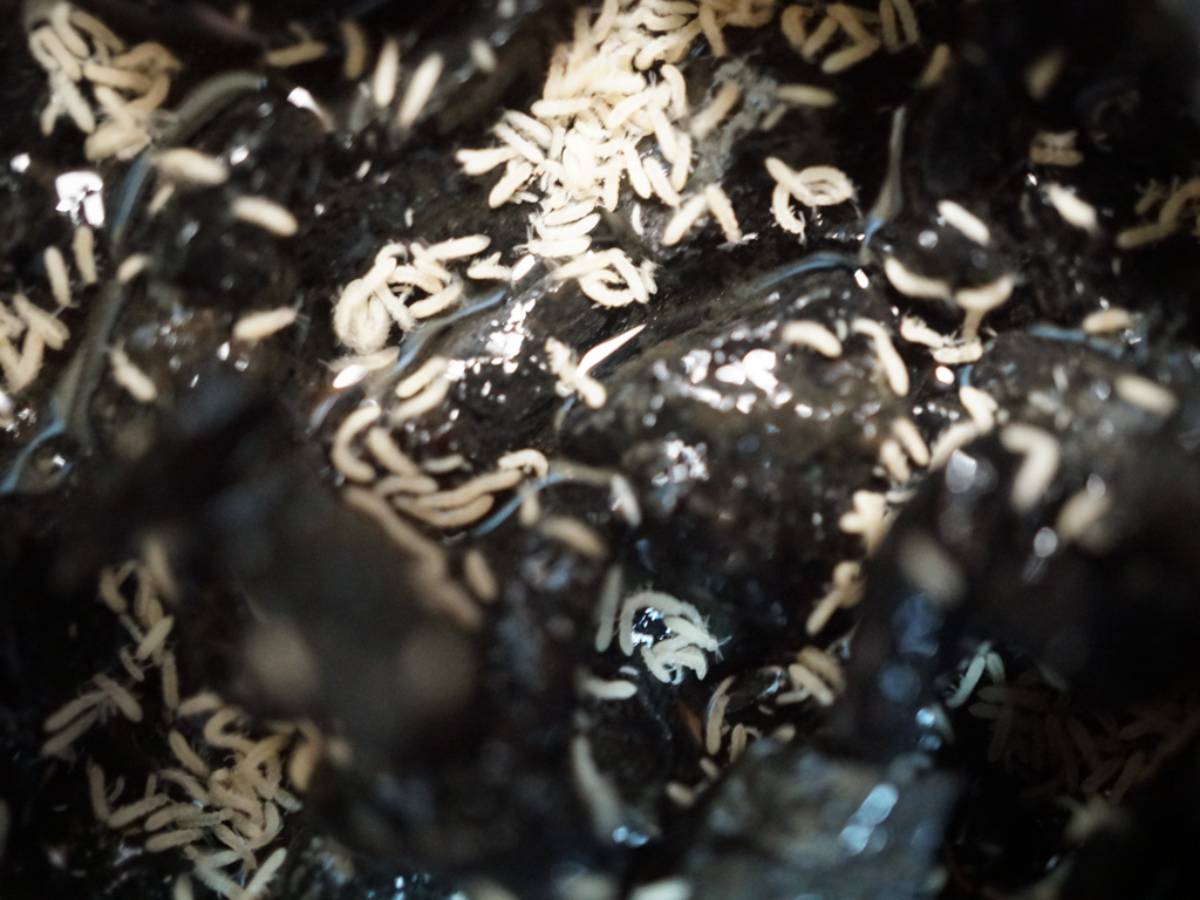
Springtails
Springtails (Collembola species) are soil isopods that measure approximately 1/32 of an inch. Springtails serve as vivarium janitors, consuming organic materials and making them available to plants. Springtails also will reproduce in the vivarium, and serve as an additional source of food for some vivarium inhabitants, such as dart frogs. Josh's Frogs offers temperate springtails that are bred at our facility. Temperate springtails are perfect for adding to the vivarium as janitors and an extra source of food. Temperate springtails reproduce faster than other springtail species when cultured outside the vivarium, on charcoal.
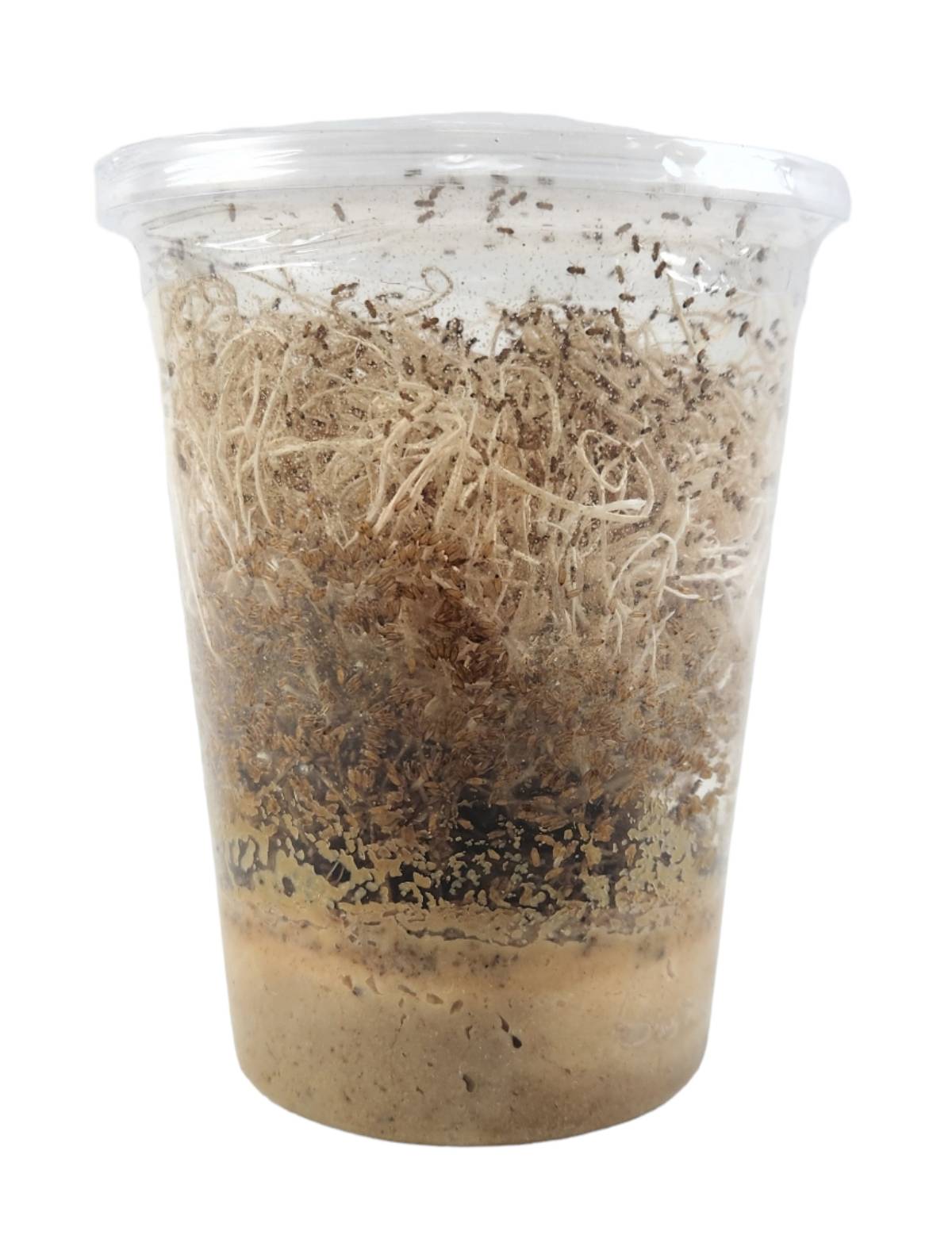
Melanogaster Fruit Flies
Drosophila melanogaster (also know as melanogaster, melanos, or mels) are probably the most commonly encountered species of fruit fly in the hobby. These flies measure about 1/16 of an inch long, making them ideal as the staple food for a variety of dart frogs and other animals that prefer smaller prey items.
These flies lack wings, and as such are unable to fly. The life cycle of Drosophila melanogaster is very quick. Within 14 days of setting up a new culture, the next generation of flies is emerging. After that 14 day waiting period, new flies emerge every day. This quick generation time means that the culture will produce thousands of flies, fairly consistently, from days 14-28, when the culture is disposed of. Because of this, melanogaster fruit flies are generally preferred by those who are new to culturing fruit flies—melanogaster tend to be more forgiving and easier to culture consistently.
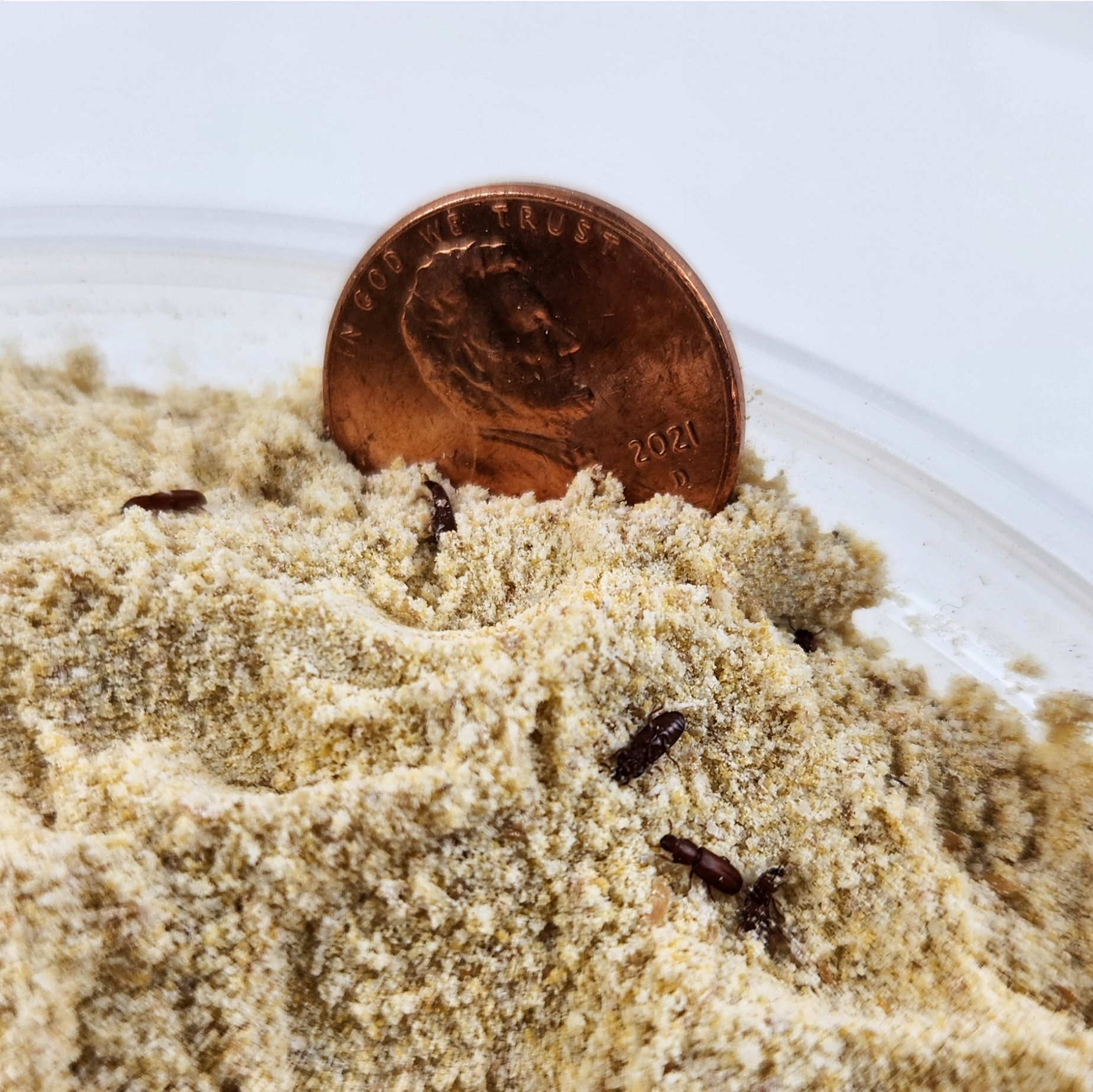
Rice Flour Beetles
The confused rice flour beetle (Tribolium confusum) is an easy-to-culture, convenient food source for poison dart frogs, bumble bee toads, fish, and other small animals that enjoy smaller food items. Rice flour beetles are cultured in a media consisting mainly of flour, and take some time to start producing. When these beetles do breed, they are very easy to maintain and can go months without any upkeep, making rice flour beetles an ideal 'special treat' or 'backup feeder' if you run out of other feeder insects.
Adult rice flour beetles are capable of emitting an unpleasant tasting chemical when threatened, making them unpalitable to many animals. Rice flour beetle larvae, however, are very nutritious and palatable, and most poison dart frogs, bumble bee toads, fish, and other small animals will eat rice flour beetle larvae with relish.
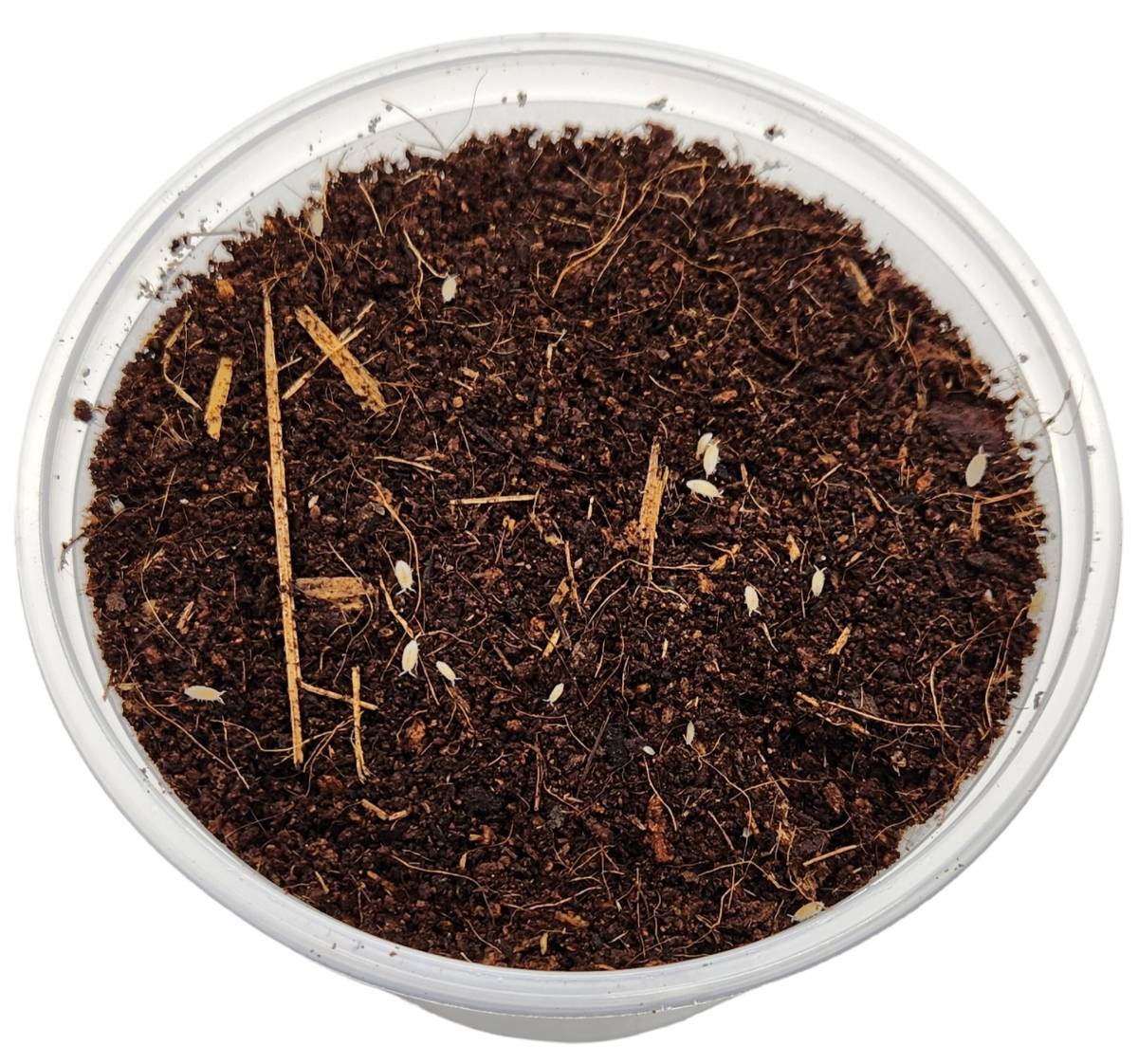
Isopods
These isopods are very small and softer bodied than the other species we work with, making them an excellent prey animal. They also tend to reproduce fairly quickly, making them one of the easiest isopods to culture. These are considered to be the ‘original’ isopods in the trade, as they have been cultured the longest. Isopods, although not necessary to successfully keeping dart frogs, certainly make proper husbandry easier. Dwarf Tropical White Isopods play an important function in the home vivaria – mainly as nutrient cyclers and an additional food source. Isopods are simple to keep and culture at home.
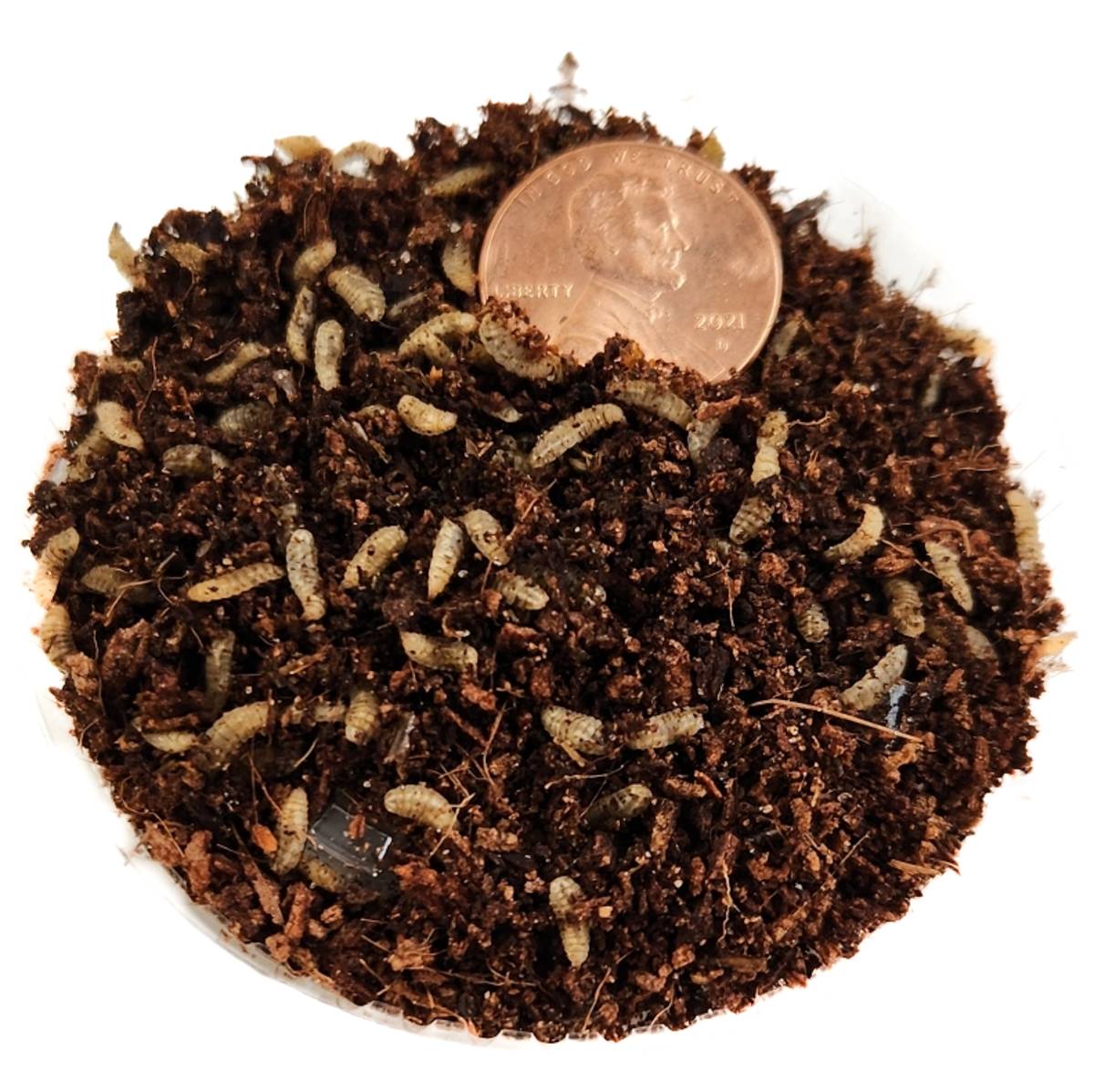
Black Soldier Fly Larvae
Black Soldier Fly larvae, also known in the reptile industry as Phoenix Worms, CalciWorms, and soldier worms, have a balanced calcium:phosphorus ratio and are the only calcium-rich feeder that can be safely fed as a staple, without supplemental dusting or gut loading. BSFL also naturally contain high levels of lauric acid, which is known to kill viruses, protozoa, and coccidia. Not only do black soldier fly larvae contain all the nutrition your reptiles or amphibians need, but they help to keep them healthy, as well.
Extra small and small BSFL are the perfect treat for your poison dart frog!
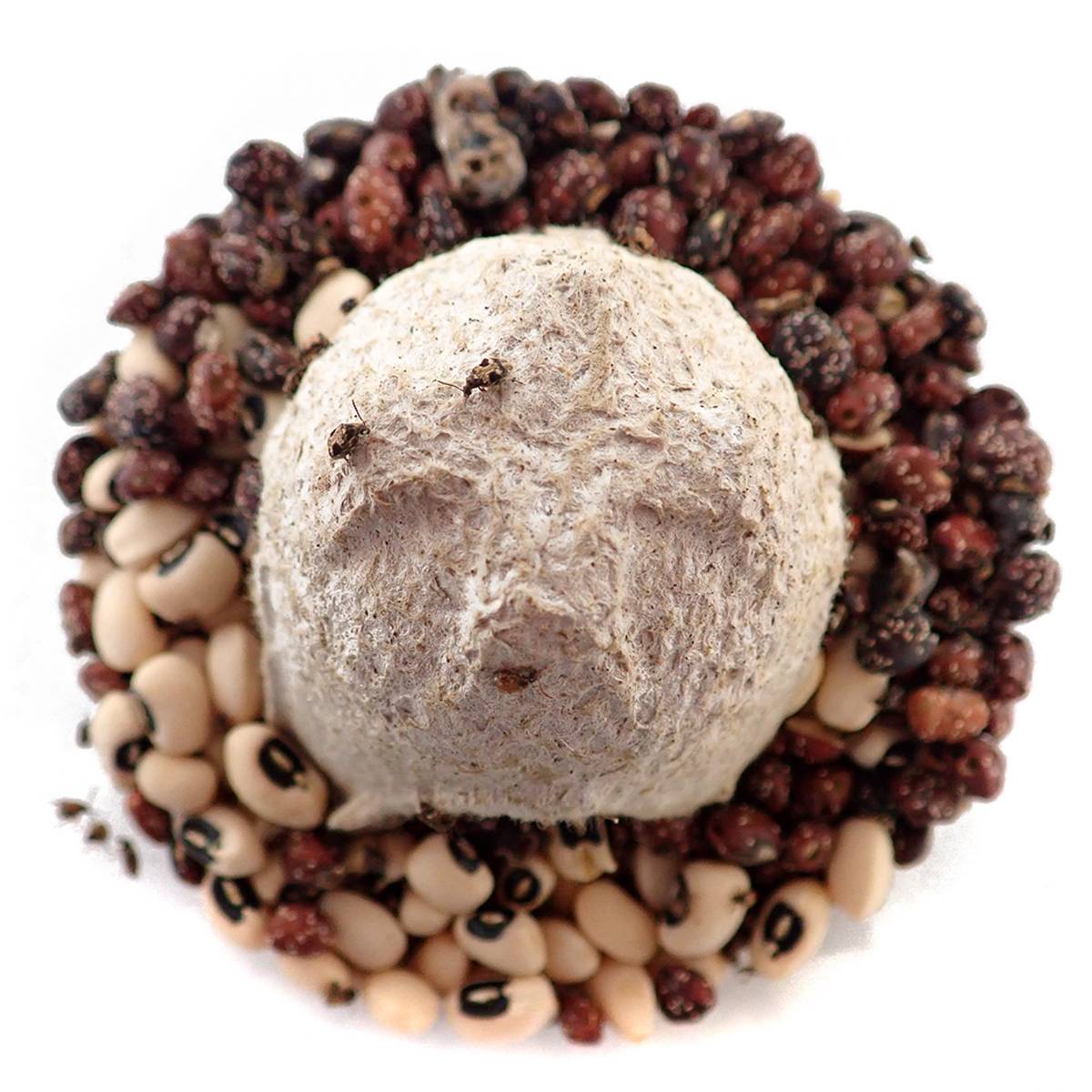 Bean Beetles
Bean Beetles
Bean beetles are a species of weevil that lay their eggs on black eyed peas. Black eye peas are high in protein, fiber, iron, calcium and even contain some vitamin A.
Bean beetles make great snacks for dart frogs and other herps that appreciate smaller prey. Each culture will produce hundreds of beetles over several weeks. A culture may not have bean beetles visible when it's received, but hundreds of beetles will emerge in the next couple weeks. Keep the culture warmer (up to 85°F) to see beetles faster.
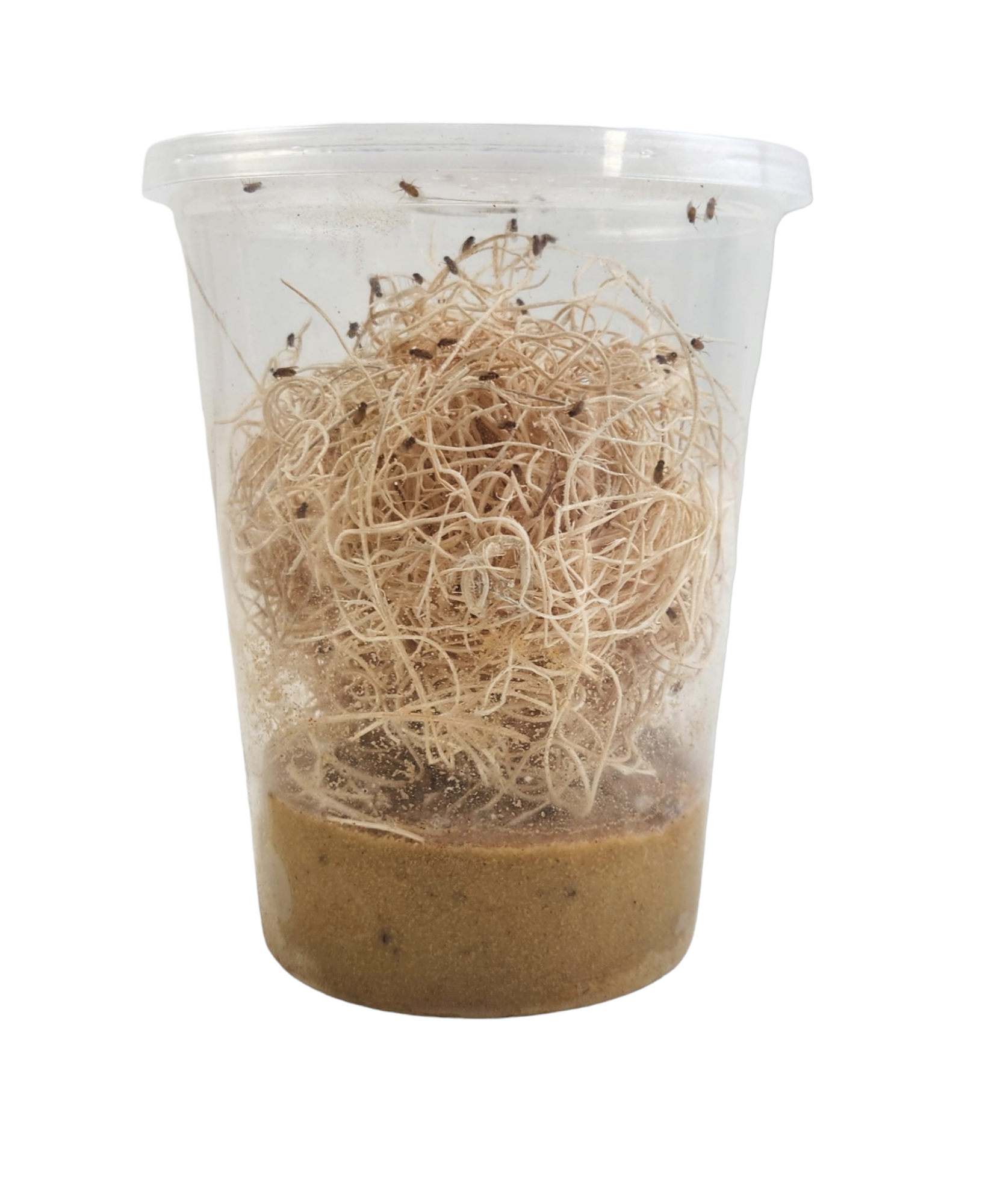
Hydei Fruit Flies
Drosophila hydei (also known simply as hydei) are a commonly encountered fruit fly in the hobby. Hydei measure about 1/8 inch–perfectly suited for dart frogs that prefer larger prey items, or other pets with similar needs. A ‘flightless’ form of hydei is most commonly available—this strain will not revert back to fliers at a higher temperature, unlike ‘flightless’ melanogaster.
The life cycle of D. hydei is much longer—it will take 21 days or more until the first new hydei begin emerging in a culture. Hydei fruit fly cultures show a particular ‘boom and bust’ cycle—the culture will appear empty, only to suddenly be filled with flies overnight. Most cultures will have 2-3 booms, with 5-7 days between each one.
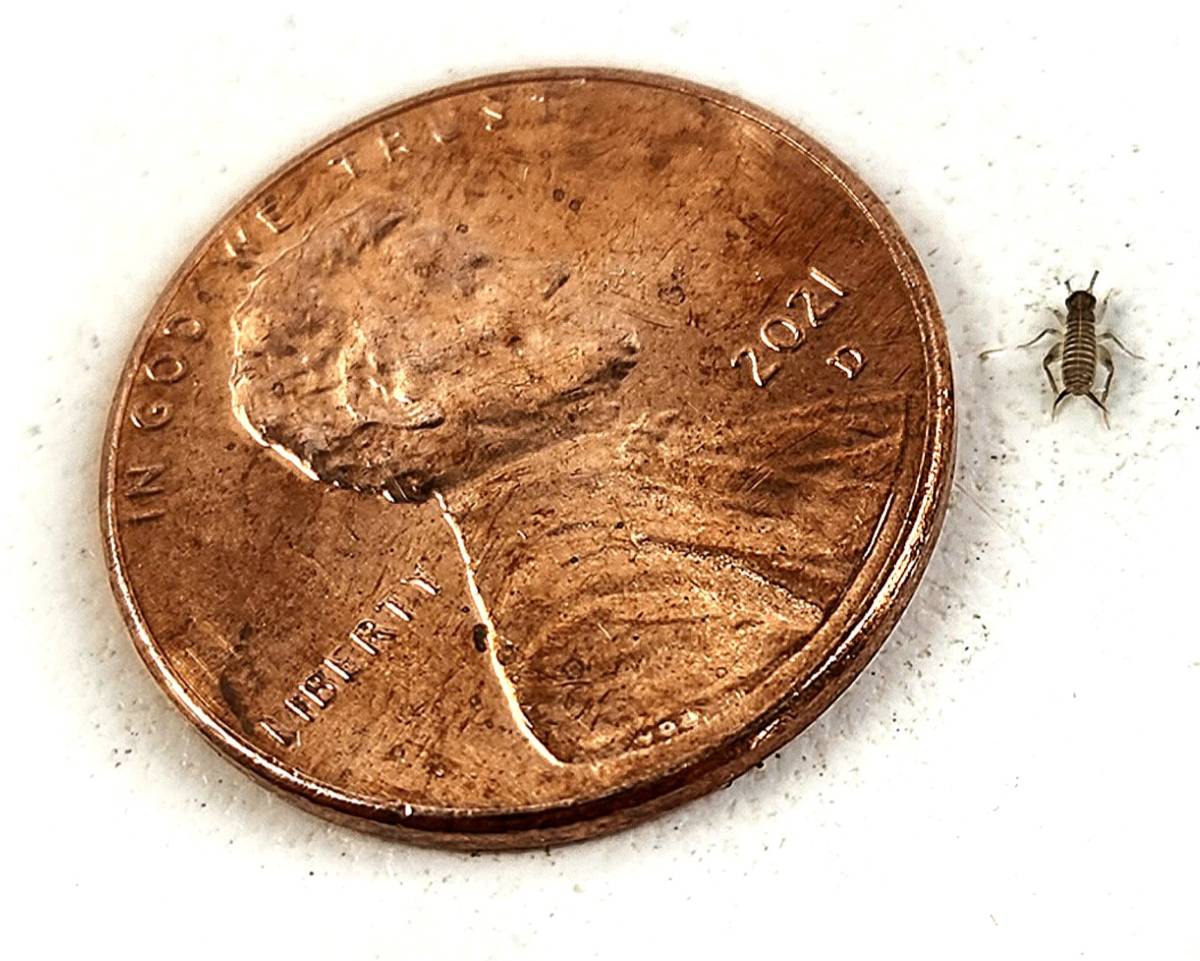
Pinhead (1/16 inch) / 1/8 inch Crickets
Easy to keep, inexpensive, and full of nutritious vitamins and minerals when properly gutloaded and dusted, crickets will eagerly be eaten by your small pet reptiles and amphibians. Josh's Frogs always recommends feeding your crickets with a quality cricket food for at least 48 hours before feeding them to your pet reptile or amphibian.
Crickets will easily drown in a water dish, so instead it's recommended to use fresh veggies or Josh's Frogs Insect Watering Gel.
How Often do I Feed Poison Dart Frogs?
It's common lore that poison dart frogs must be fed daily, especially young frogs. We feel this advice has been spread to some degree to make keeping dart frogs more difficult and time consuming than it really is! While dart frogs can be fed daily, at Josh's Frogs we feed all of our dart frogs three times a week—on Monday, Wednesday, and Friday.
If feeding crickets to larger adult dart frogs, we often skip a feeding beforehand. Crickets have a habit of hiding and sometimes growing up in the vivarium—skipping a feeding makes the dart frogs that much more eager to hunt down all the crickets in the habitat.
Treats, such as rice flour beetle larvae or black soldier fly larvae, are typically fed every month or so. While crickets can be fed as a staple (fruit flies are a much more economical option), we like to feed them to our breeding dart frogs every month or so.
How Much do I Feed my Dart Frogs?
At Josh's Frogs, we are often asked how many fruit flies a dart frog should be eating every day, or how many flies a dart frog can eat without getting fat. Truth be told, there is no exact answer to that question. Instead, we recommend placing a small piece of banana (about 1/4 inch of a thin slice without the peel) in the vivarium. This 'feeding station' will attract loose fruit flies in the vivarium, allowing you to determine approximately how many are in the tank. Using this information, you can make an educated decision as to how many fruit flies to feed.
For example, let's say you feed fruit flies to your dart frogs on Monday. Wednesday, before you feed, check out the banana. If there are just a few fruit flies on the banana, go ahead and feed the same amount you did on Monday. If there are tons of fruit flies on the banana, do not feed again until Friday, then feed less than you did previously. If there are no flies on the banana, feed a little bit more than you did on Monday.
